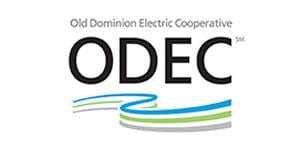Generating power – and more value for customers
ODEC accurately forecasts energy needs, keeps rates low for members with SAS® Energy Forecasting
When you flip on a light switch, you expect the light to turn on. And, except in rare cases, it does. That’s because utility companies plan your energy needs months ahead, using data from previous years to forecast demands on the grid.
Better forecasting not only means more reliable service, but it can also help companies keep costs down. Providers like Old Dominion Electric Cooperative (ODEC) can use analytics to predict when to buy energy in advance. This translates into cost savings and lower energy costs for member companies. ODEC provides wholesale power to 11 non-profit member distribution cooperatives in Virginia, Maryland and Delaware, serving 1.4 million customers in the rural and suburban areas of those states.
To give its members the best value, ODEC uses SAS Energy Forecasting to manage and analyze a wealth of data on weather, demand and population growth. The results are substantial. Within two years of implementation, ODEC reduced its rates four times, saving members millions of dollars along the way.
Planning for the future
Forecasting helps utilities plan days, months and even decades ahead. They use a variety of internal and external data points to anticipate how much energy they need to buy and which investments to make, like the $3 billion natural gas-fueled electric generation facility ODEC is building in 2017.
The ability to forecast for future demand is critical for cooperatives like ODEC that buy a majority of their power from the energy market. Currently, ODEC produces 47 percent of the power it provides. It needs to purchase the remaining 53 percent months in advance – or operate at the mercy of the market.
“Our product can’t be stored, so it doesn’t go on the shelf. We generate it and transmit it in real time,” says David Hamilton, Load Forecasting Manager at ODEC. “Somebody turns on the light switch or the air conditioning, and they want electricity at their fingertips. It’s always there, and that’s because we’ve planned appropriately.”
SAS Energy Forecasting allows ODEC to forecast more efficiently and accurately. Depending on the prices, ODEC buys contracts from six months to three years in advance. The company seeks to buy blocks of power at times when the prices are low.
“The forecast drives our business,” Hamilton says. “We need to ensure we have enough power plant capacity to serve each of our members for the next year.”
Our rates are low and have stayed low, because the accuracy of our forecasts is extremely good.
David Hamilton
Load Forecasting Manager
A better approach leads to improved accuracy
When Hamilton first joined ODEC, the utility company was using an off-the-shelf software tool along with Microsoft Excel to perform energy forecasting. The inefficiencies of this method added to the data validation challenges. More importantly, it could lead to second-guessing from regulators and auditors.
For ODEC, the solution was simple: make better decisions from the data already available. Now SAS is the single source for medium- and long-term forecasts, a relationship “that will never change,” according to Hamilton. A big reason is transparency. If the SEC or state commissions want to review the work, they can see how ODEC builds its models and what goes into the models.
“I want an open system, and SAS is one of the few that has everything there, fully explained,” says Hamilton. “All the statistics, all the programming, everything is completely open for someone to evaluate and audit.”
Because the forecasting is automated, analysts are no longer required to be programmers to run the forecasting process. The system automatically builds the most appropriate model for the data, allowing ODEC to forecast with greater accuracy. In the last two years, Hamilton used SAS to produce ODEC forecast budgets within 1 percent of accuracy.
“Our rates are low and have stayed low, because the accuracy of our forecasts is extremely good,” says Hamilton.
Flexible forecasting, no matter what lies ahead
Hamilton’s department can account for variables like anticipated demand and population growth, also allowing for unforeseen changes – like an unexpectedly cold winter – to alter the forecast. Increasingly, ODEC is also using SAS to ensure grid reliability as renewable sources like solar panels, electric cars and wind farms become more mainstream.
ODEC also is developing data marts to drive its models with pre-verified variable streams. These massive data processing activities allow ODEC to build and update forecasts in hours versus days.
“We use these data marts for any ad hoc weather analysis that we’re developing on a monthly basis,” says Hamilton. “If any of our members want to look at any portion of their load or specific substation, we’re using SAS to provide that data in a format they can use.”
Additionally, ODEC is looking into using SAS Analytics for short-term forecasts to determine peak days and specifically the hour of the peak and the estimated load of that hour. This will help reduce load during peak conditions to better control transmissions and costs.
“We got a big bang for our buck when we first started using SAS, and now we are trying to use it for other applications, other needs, especially around extreme weather periods,” says Hamilton. With this increased efficiency, ODEC can build models faster, share information better and continue to keep rates low for its members decades to come.

Challenge
Accurately forecast power supply needs for more than 1.4 million customers.
Solution
Benefits
- Know when it’s the optimal time to buy energy off the market and at the best price.
- Maintain low energy rates for customers, saving members millions of dollars.
- Have enhanced transparency for audits.
